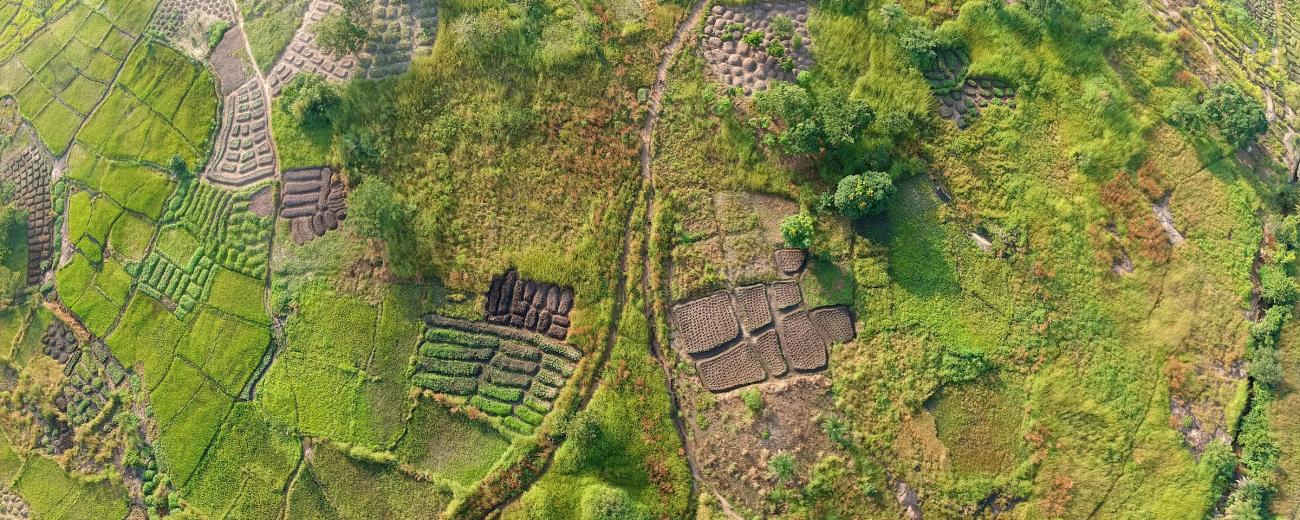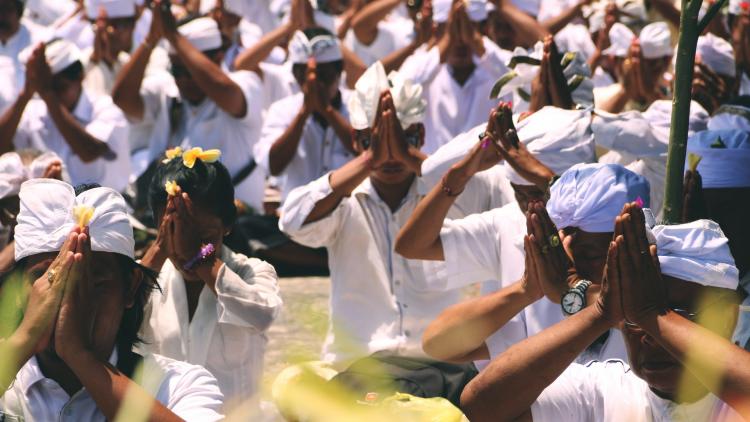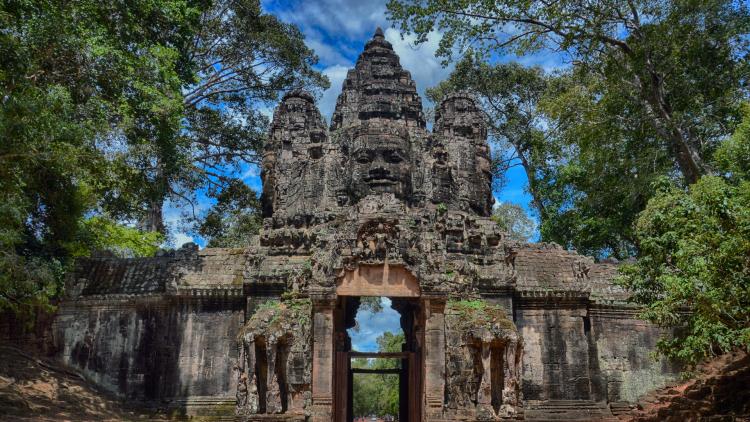Collective Village Repertoires: The Challenge of a Collective Digitisation in Guinea


This piece is co-authored by Elara Bertho and Aguibou Sow
In a reflection on the notion of a collective village repertoire and its digitisation, I return to the research-action programme carried out with the Malian association Donkosira, which since 2017 has aimed to digitally conserve local knowledge in rural communities in Mali, Senegal, and Guinea.
The method is quite simple: village delegates are provided with mobile phones so that they can record the community data they wish to preserve. The aim is to create small blog posts on the Donkosira association’s website, with short videos, photos, and short multilingual texts. It is about valuing local knowledge and inverting the decision-making relationship with regard to field data; it is the delegates themselves who produce for their community, the data that they post online.
We also wanted to soften the hierarchical investigator/respondent relationship (often modelled on post-colonial relationships), by giving more latitude and room for manoeuvre to the collaborators. It is not my intention here to go back over the many difficulties and setbacks in regulating this asymmetry, which has never been completely erased.
Instead, I would like to return to an unexpected consequence of this room for manoeuvre left to the interlocutors: the constitution of a collective village repertoire, alive and relevant to the village on a daily basis. I will return to this notion of collective repertoire by taking the example of the village of Damaro, in Upper Guinea, before presenting an illustration of this repertoire. This will be an opportunity to define the notion of ‘common’ in performance.
Village collective repertoire
Studies of oral literature have drawn heavily on the notion of ‘repertoire’, for example in relation to the repertoire of a storyteller or the repertoire of a griot. It is a set of texts that a master of the word or an artist keeps in his memory and can utter, perform in a recitation context for his audience. This use of the term refers to what an opera or theatre might call its ‘repertoire’: a set of works that are part of a ‘usual background’, likely to be performed by the ballet company or the theatre company.
In literary studies, however, it is often centred around a figure of a performer, a griot, or an artist who masterfully embodies his or her repertoire. The notion of ‘author’, of ‘authority’ in the mastery of the text, is still prevalent.
I propose to change the focus thanks to the notion of collective village repertoire, for which the question of authorial authority seems out of place: these are not great epics recited with brilliance by this or that griot. Locally, it is a set of texts that are regularly performed in groups in a village to punctuate daily life. They can be wedding songs, praises of founding ancestors, tales, advice to the bride and groom, etc. They are sung collectively, often with a leader of the song, and the group in response. They are known to all and they are re-vocalised at regular intervals.
Attention to ‘endogenous knowledge‘, as Cheikh Ba points out, calling for a ‘political ecology of knowledge’, allows repertoires to emerge ‘from below’ and not in response to demand. Above all, it allows stories and texts to emerge that I would never have imagined asking for, for the good reason that I didn’t know they existed. These texts and songs bear witness to a literary practice that is less prestigious than epics (which are studied extensively elsewhere), but which is nevertheless much more present in everyday life.
The digitisation carried out by the delegates from Damaro, Ansoumane Camara and Fatoumata Doumbouya, is not exhaustive, of course: it would be futile to try to collect every tale or song known to everyone. An “attempt to exhaust” the village of Damaro, a la Pérec, would not be of much use, but the range collected allows us to realise the great amplitude of the stories told in daily life. Here are a few links to the stories posted online that give an idea of the texts collected:
- The hymn of Farin Kaman, the founder of the village
- A tale about the collective management of orphans
- Repertoires of proverbs
- Songs to counsel the bride
- Songs for the baptism of the child
The texts cover a large part of collective life: ancestor songs, proverbs, tales. They are known collectively, even if some people specialise from time to time because they are recognised as having a particular talent for storytelling or singing. They participate in the ‘common life’ of the village, in the experience of the collective.
I would like to go back to this notion of the collective in a second point, concerning a song collected during this project. Its re-vocalisation in very different contexts reflects the adjustments of the repertoire in everyday life.
From colonial canton chief to Red Cross volunteer
Here is the song in honur of Djiguiba Camara, chief of the canton of Damaro, in the late colonial period, in Konianké and in English translation.
Hymn of Djiguiba Camara – Kôrôni gnama
Griotte: Unsorted cotton, unsorted cotton
All: Yes, unsorted cotton
Griotte: The women’s concern is salt for the sauce and the men’s concern is the light-skinned Djiguiba (oulèn: red)
Griotte: Unsorted cotton, unsorted cotton
All: Yes, unsorted cotton
Griotte: The women’s concern is salt for the sauce, and the men’s concern is the light-skinned commander
This song was sung in honour of this canton chief. It is based on the metaphor of cotton that is sorted and from which the impurities are removed when it is harvested. Cotton is similar to Djiguiba Camara’s sense of justice: the part that is collected, white and pure, is the truth.
The dirty part is the lie that is thrown away. The song expresses Djiguiba’s fairness and equity in the judgements he made. This hymn was sung when Djiguiba Camara arrived and was accompanied by the white commander of the Beyla circle.
Today, this song is sung as a sign of welcome to visitors. We heard it in 2016 with Marie Rodet. The community celebrates a memorable hero, in unison. More surprisingly, at first sight, it was also sung during a visit from the Red Cross. I happened to be there and was very surprised to hear about this celebration during a visit to check on Ebola survivors in the village.
Perhaps the answer lies in what we mean by oral ‘heritage’: not a fixed object with a stable meaning, but an object in motion, susceptible to being reshaped according to usage. The repertoire is reinvested to say something else: the representatives of the Red Cross are not celebrated as the new “Djiguiba Camara”. The ‘Damaro’ collective certainly meets to perform its unity in front of health authorities likely to make decisions that will disrupt the lives of the inhabitants.
But above all, this song allows the village to come together to demonstrate its unity, its good health, and its good governance. It is a staging of the self, drawing on local history to rewrite the present.
This piece is co-authored by Elara Bertho (LAM, Sciences Po Bordeaux), co-investigator in SOAS research project: Watigueleya Kèlê, Equitable Climate Resilience in West Africa: A Comparative Research Action Programme (Mali, Guinea and Senegal) and Aguibou Sow.


